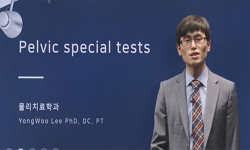Purpose: The Visual Analogue Scale (VAS), as a pain measurement tool, has been shown to be a reliable measurement for chronic pain. However, the reliability and the validity of the VAS have not been demonstrated in an acute setting where pain fluctua...
http://chineseinput.net/에서 pinyin(병음)방식으로 중국어를 변환할 수 있습니다.
변환된 중국어를 복사하여 사용하시면 됩니다.
- 中文 을 입력하시려면 zhongwen을 입력하시고 space를누르시면됩니다.
- 北京 을 입력하시려면 beijing을 입력하시고 space를 누르시면 됩니다.

급성 통증의 평가를 위한 Visual Analogue Scale (VAS)의 신뢰성 검토 : Its Usefulness as a Pain Measurement Tool in an Emergency Setting = Visual Analogue Scale in Acute Pain measurement
한글로보기https://www.riss.kr/link?id=A30054448
- 저자
- 발행기관
- 학술지명
- 권호사항
-
발행연도
2003
-
작성언어
Korean
- 주제어
-
KDC
510.000
-
등재정보
KCI등재후보
-
자료형태
학술저널
- 발행기관 URL
-
수록면
61-65(5쪽)
-
KCI 피인용횟수
20
- 제공처
- 소장기관
-
0
상세조회 -
0
다운로드
부가정보
다국어 초록 (Multilingual Abstract)
Purpose: The Visual Analogue Scale (VAS), as a pain measurement tool, has been shown to be a reliable measurement for chronic pain. However, the reliability and the validity of the VAS have not been demonstrated in an acute setting where pain fluctuations might be greater than they would be for chronic pain. This study assessed the usefulness of the VAS in an emergency setting.
Methods: Patients 16 years of age or older who presented with acute pain resulting from trauma or non-traumatic diseases were enrolled in this prospective, observational study. A 100-mm non-hatched, horizontal visual analogue scale was used to measure the pain severity. VAS measurements were obtained 1 minute apart at admission, 30 minutes after admission, and 1 hour after treatment. Intraclass correlation coefficients (ICCS) with 95% confidence intervals (95% Cls) and a Bland-Altman analysis were used to assess the reliability and the validity of the VAS measurements.
Results: The ICCs for paired VAS scores at admission, 30 minutes after admission, and 1 hour after treatment were 0.988 (95% CI=0.98 to 0.99), 0.968 (95% CI=0.95 to 0.98), and 0.989 (95% CI=0.98 to 0.99), respectively. The Bland-Altman analysis showed that 95% of the paired measurements at admission, 30 minutes after admission, and 1 hour after treatment were within 7 mm.
Conclusion: The VAS appears to be a highly reproducible instrument for measurement of acute pain in the emergency department. This study suggests that the VAS is sufficiently reliable to be used to assess acute pain.
동일학술지(권/호) 다른 논문
-
- 대한응급의학회
- 윤상규
- 2003
- KCI등재후보
-
- 대한응급의학회
- 고대이
- 2003
- KCI등재후보
-
- 대한응급의학회
- 조석주
- 2003
- KCI등재후보
-
실험적 뇌좌상 후 뇌조직과 혈청에서 Interleukin-6의 변화
- 대한응급의학회
- 전병민
- 2003
- KCI등재후보
분석정보
인용정보 인용지수 설명보기
학술지 이력
| 연월일 | 이력구분 | 이력상세 | 등재구분 |
|---|---|---|---|
| 2027 | 평가예정 | 재인증평가 신청대상 (재인증) | |
| 2021-01-01 | 평가 | 등재학술지 유지 (재인증) |  |
| 2020-05-08 | 학회명변경 | 영문명 : The Korean Society Of Emergency Medicine -> The Korean Society of Emergency Medicine |  |
| 2018-01-01 | 평가 | 등재학술지 유지 (등재유지) |  |
| 2015-01-01 | 평가 | 등재학술지 유지 (등재유지) |  |
| 2011-01-01 | 평가 | 등재학술지 유지 (등재유지) |  |
| 2009-01-01 | 평가 | 등재학술지 유지 (등재유지) |  |
| 2006-01-01 | 평가 | 등재학술지 선정 (등재후보2차) |  |
| 2005-01-01 | 평가 | 등재후보 1차 PASS (등재후보1차) |  |
| 2003-01-01 | 평가 | 등재후보학술지 선정 (신규평가) |  |
학술지 인용정보
| 기준연도 | WOS-KCI 통합IF(2년) | KCIF(2년) | KCIF(3년) |
|---|---|---|---|
| 2016 | 0.23 | 0.23 | 0.22 |
| KCIF(4년) | KCIF(5년) | 중심성지수(3년) | 즉시성지수 |
| 0.22 | 0.22 | 0.339 | 0.06 |




 RISS
RISS KISS
KISS







